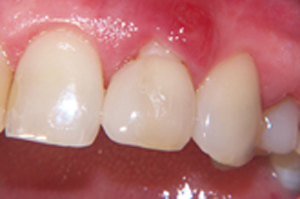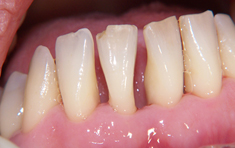Periodontal Disease
Periodontal disease is inflammation of the gums. It is caused by the build up of bacteria and other particles around the teeth. This plaque is a sticky, colourless film that forms on the tooth surface. If it is not removed it hardens to form “ tartar” (calculus). Calculus and plaque do cause the gums to become inflamed and this is what causes gum disease. This is because the bacterial toxins and the body’s natural response to infection start to break down the bone and supporting structures of the teeth. This may eventually lead to tooth loss. Gum disease can occur in different forms and severity.

Gingivitis
This is where the gums become red, swollen and can bleed quite easily.
Read More
Peridontitis
More advanced form of gingivitis and progresses if not treated.
Read More
Risk Factors
There are factors that can make a person more susceptible to gum disease.
Read More
Signs of Gum Disease
Gum disease is not usually associated with pain unless there is an infection or it is quite advanced.
Read More
Treatment of Gum Disease
After a thorough assessment and diagnosis of gum disease, treatment aims at controlling and resolving the inflammation and infection of the gums.
Read More